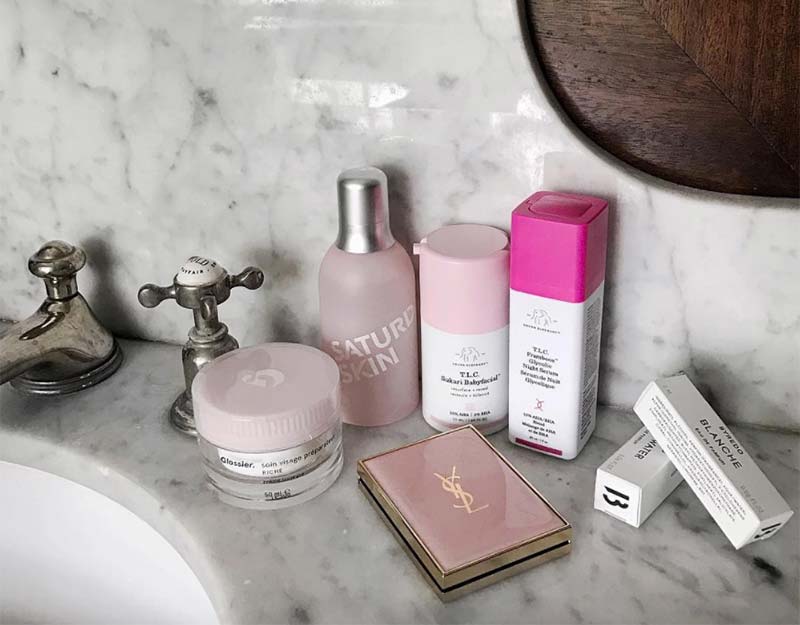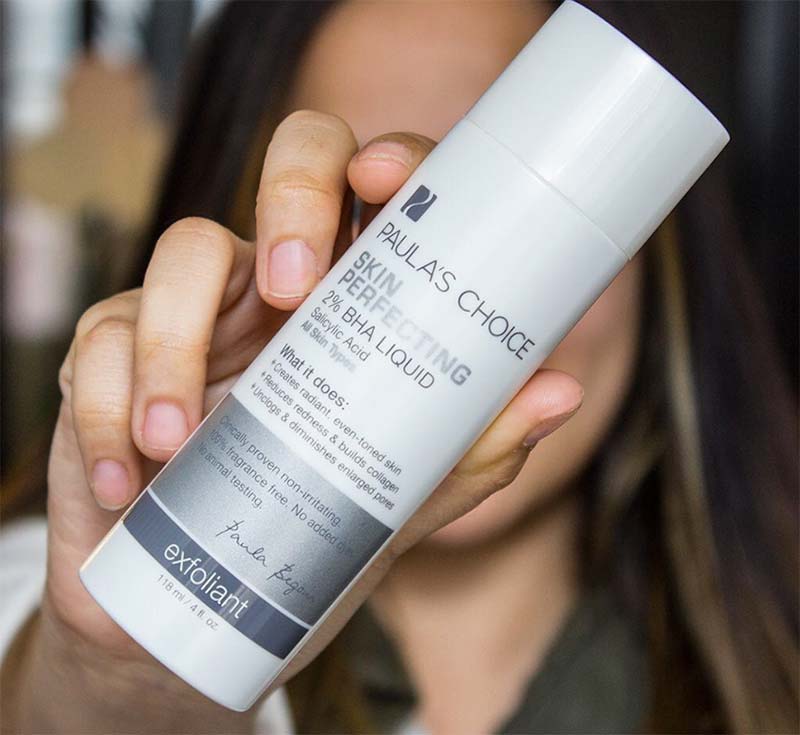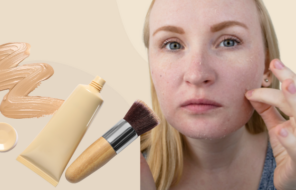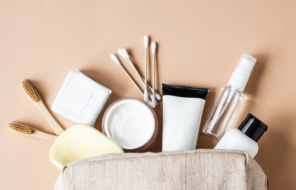The benefits of using an acid-based exfoliator are huge, but it also requires some serious know-how. In this article, I think I can convince you that using acids and chemical peels is the way to go, and I’ll also make sure you learn which acids to choose, and how to use chemical peels properly.
In this article:
- How Does Chemical Exfoliation Work?
- Why Should the Skin Be Exfoliated, Anyway?
- Why Is Chemical Exfoliation Better Than Physical Exfoliation?
- What Kind of Acids Are Used for Chemical Peels?
- How to Add Chemical Exfoliants to Your Skin Care Routine?
- Can You Use Different Acids As Chemical Peels?
- Chemical Exfoliation Safety
- Things to Expect When You Begin Chemical Exfoliation
How Does Chemical Exfoliation Work?
Chemical exfoliation is done with acids. Different acids function slightly differently, but the basic premise is that once applied to the skin, they trigger the shedding of the dead skin cells by preventing them from adhering to the epidermis and to each other.
Why Should the Skin Be Exfoliated, Anyway?
The top layer of our epidermis is called the stratum corneum, and it is made up of dead skin cells. While we do want to preserve some of the stratum corneum, we also don’t want to let too many dead skin cells build up, for a few reasons.
- Build-up of dead skin cells in the pores can cause breakouts.
- Excess of dead skin cells can cause the skin to become flakey.
- Unexfoliated skin is likelier to look dull and lifeless.
- Moisturizers, face serums, and other beneficial ingredients cannot penetrate through an overly thick layer of dead skin.
- Fine lines and wrinkles look deeper when there is a dead skin cell build-up.
Additionally, almost all skin concerns can be mitigated with exfoliation. Regular exfoliation helps regulate skin cell reproduction, helping to improve the appearance of the skin over time. The following skin problems can be minimized or fixed with regular chemical exfoliation:
- Blackheads, whiteheads, and other signs of acne
- Fine lines and wrinkles
- Hyperpigmentation and dark marks
- Post-acne marks
- Uneven skin texture
- Large pores
- To a certain extent, even sensitive skin conditions like rosacea and eczema can be improved with careful chemical exfoliation.
Why Is Chemical Exfoliation Better Than Physical Exfoliation?
As I’ve mentioned before, there are a few excellent reasons why chemical exfoliation is a much better choice than physical exfoliation, such as dermaplaning or microdermabrasion.
- Physical scrubs can be too aggressive, and cause microtears in the skin. Chemical exfoliation is much more gentle, because it triggers the shedding of dead skin.
- It is easier to achieve an even and thorough exfoliation with chemical exfoliators.
- Those with acne-prone skin do not need to worry about a chemical exfoliant breaking their pimples and spreading bacteria.
- There are many different types of chemical exfoliators that can target different skin concerns.
- Some scrubs are made with plastic microbeads, which cannot be filtered out of water, and end up seriously harming aquatic ecosystems.
What Kind of Acids Are Used for Chemical Peels?
There are a few types of acids you will often see for at-home chemical exfoliation. I’ll talk about them in order of most common, to the less common ones.
Glycolic Acid Chemical Peel
This chemical exfoliant is a type of alpha-hydroxy acid, also known as AHA. It is frequently used in chemical peels because it is able to penetrate the skin quite deeply, giving a thorough exfoliation.
In professional spa settings, it can be applied as a chemical peel at a concentration of up to 70%, but for regular use at home you should not go higher than a 15% concentration. In order to exfoliate effectively, the pH of the formula containing the glycolic acid must be between 3 and 4.5.
This acid cannot penetrate through oil, so before applying it, the skin must be thoroughly cleansed. This is one of the best chemical exfoliators for normal and dry skin, as well as for dealing with pigmentation, uneven skin texture, and signs of premature aging.
Salicylic Acid Chemical Peel
Also known as beta-hydroxy acid or BHA, this wonderful acid is the second most ubiquitous chemical exfoliant in skin care. This acid is closely related to the active ingredient in aspirin, so it is a phenomenal two-in-one anti-inflammatory and exfoliator. It also has some antibacterial properties.
To be effective, chemical peels containing salicylic acid should be at a pH between 3 and 4, and the percentage of BHA should be around 0.5% to 2% – a higher percentage has the potential to irritate the skin.
Because salicylic acid is water soluble, it is effective even if there is oil on the skin. Additionally, it is able to exfoliate inside the pore, so it is overall recommended for those with oily skin, as well as for those with sensitive skin. The antibacterial and anti-inflammatory properties of salicylic acid peels make it wonderful for dealing with acne.
Lactic Acid Chemical Peel
This chemical exfoliator is another type of alpha hydroxy acid. It works similarly to glycolic acid, but it is much gentler, and therefore preferred for sensitive and dry skin types. In addition to being a wonderful gentle exfoliant, lactic acid also has humectant properties, so it is able to hydrate the skin.
For it to exfoliate effectively, the pH of the formula it is in must be between 3 and 4. For daily at home use, you should not go higher than 15% lactic acid in your formula.
Mandelic Acid Chemical Peel
This is yet another alpha hydroxy acid that is sometimes known as amygdalic acid. Mandelic acid is even gentler than lactic acid, due to its larger molecules, which penetrate the skin more slowly, and due to its hydrating properties.
On top of being an excellent chemical exfoliator, mandelic acid also has some antibacterial properties and is somewhat oil soluble, so it is a lovely choice for those with acne-prone skin and combination skin.
The pH of a serum with mandelic acid should be between 2 and 4, at a maximum of 10% acid. This acid-based chemical peel will degrade if exposed to light, so packaging must be opaque.
Other alpha hydroxy acids that you might see in various formulas, but rarely as primary exfoliants, include malic acid, tartaric acid, and citric acid.
Polyhydroxy Acid Chemical Peel
There are two types of polyhydroxy acids: gluconolactone, and lactobionic acid. These acids are a fairly recent addition to the skin care world, so not a lot of research has been done on them. The research that has been done has been extremely promising.
Despite having larger molecules than your average alpha hydroxy acid, they are still effective chemical exfoliants but with a reduced chance for irritation. They are also very effective humectants, helping to hydrate the skin, and have some free radical scavenging capabilities, making them ideal for preventing environmental damage.
To effectively exfoliate, they need to be at a pH between 3 and 4, although the percentage in the formula is not clear.

How to Add Chemical Exfoliants to Your Skin Care Routine?
There are two ways to incorporate chemical exfoliants into a skin care routine. My preferred method is as a regular toner, serum, or cream at a low percentage that can be used every day.
The second option is doing an at-home chemical peel on a weekly or semi-weekly basis. These at-home chemical peels with acid percentages as high as 40% can cause serious burns if not performed with the utmost care, so I definitely prefer leaving those to the professionals.
When you first begin incorporating acids into your skin care routine, even if they are gentle and appropriate for daily use, you should be careful. First conduct a patch test, by applying the product only to a small part of your face. Do this for a few days, and if you see no adverse reaction, you can apply it to the rest of your face.
Begin by only using it once or twice a week. After a few weeks, you can increase how often you apply your chemical exfoliants, going up to as often as once a day.
While chemical exfoliants do make the skin more photosensitive, the time of day when you apply them does not matter – wearing a sunscreen during the daytime is still mandatory, even if you apply your acids at night time.
A routine using acid chemical exfoliants should look something like this:
- Cleanse your skin with a gentle, low-pH cleanser.
- (Optional) Tone your skin with a gentle, alcohol-free toner. If you are exfoliating with alpha hydroxy acid, make sure the toner is oil free as well.
- Apply your acid-based chemical exfoliant, and let it sit on your skin for around 10 to 20 minutes.
- Finish off with serums, moisturizers, and a sunscreen if you are going to face the day.
If you are using salicylic acid, and are finding it a little harsh on your skin, you can actually apply it over a low pH serum. This will reduce its efficacy, but it will also reduce the amount of irritation it causes.
Can You Use Different Acids As Chemical Peels?
Alternating chemical exfoliants is perfectly fine, as long as you do it responsibly. Pairing salicylic acid with an alpha-hydroxy acid, for example, can be a wonderful way of achieving a thorough exfoliation. Just remember that it is really easy to overdo it with the chemical exfoliants, so go slow and patch test when adding new exfoliants to your routine.
Chemical Exfoliation Safety
Even if you use acid-based chemical exfoliators at the lower percentages that I recommended, there are still safety concerns to keep in mind.
- Learn to pay attention to your skin, and watch out for signs of irritation or acid burn.
- Don’t overdo it with the chemical exfoliation. Start off slow, and gradually increase how often you exfoliate.
- Make sure to use sunscreen religiously. It doesn’t matter if you exfoliate in the day or night – acids will still make you photosensitive.
Discontinue or decrease use of chemical exfoliators if:
- You begin experiencing irritation, in the form of red and raw looking skin, or a burning sensation.
- Your skin becomes extremely flakey.
- You experience painful breakouts in unusual parts of your face.

Things to Expect When You Begin Chemical Exfoliation
While the extreme benefits of chemical exfoliation, like an improved skin texture, fading of hyperpigmentation, elimination of clogged pores, and softening of fine lines and wrinkles take a long time to appear, you will notice some immediate changes in your skin. These are the kinds of things you might notice that are perfectly fine and normal:
- Mild flaking of dead skin.
- Mild purging of pimples that were previously buried under the skin. It shouldn’t last more than a couple of weeks, and should happen in areas of your face where you normally break out.
- Increased luster and brightness (that you eventually become used to, unfortunately).
Have you made the switch to chemical exfoliation yet? Which is your favorite acid-based chemical exfoliator? Comment and share your thoughts!
Photos via @paulaschoice, Instagram





